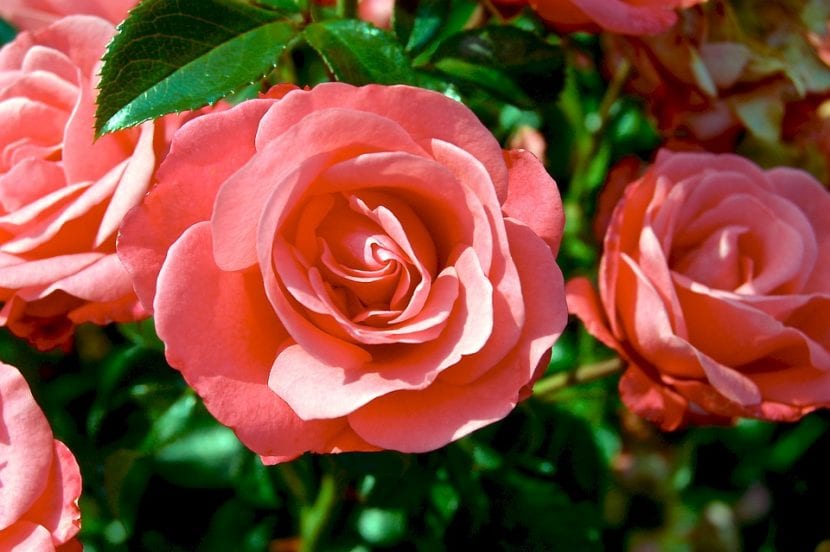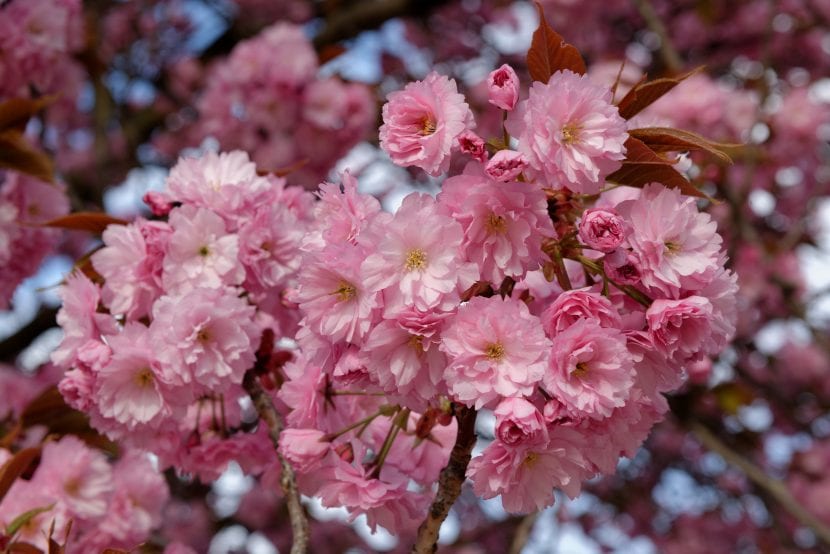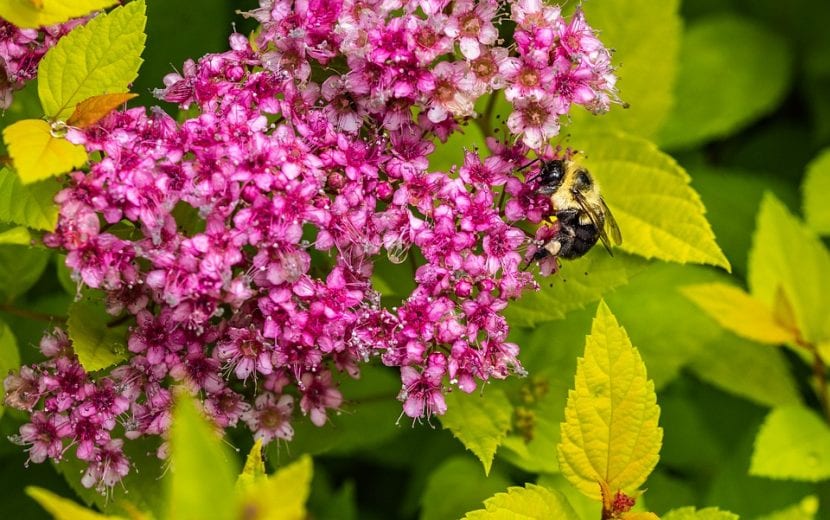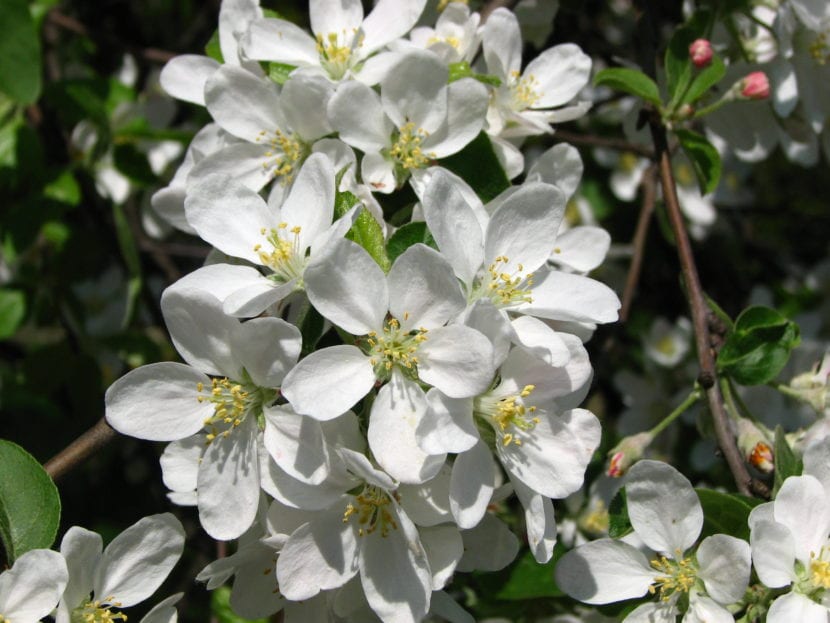
Plants of the Roseaceae family, known as RosaceaeThey are ones whose ornamental value is very, very high. In addition, there are many species that produce edible fruits and that, due to this, are cultivated in much of the world.
With 90-130 genera, in which between 2000 and 2500 species are distributed, they are some of the most successful they have had when colonizing the planet; not in vain, its distribution could almost be said to be worldwide. But, what are their characteristics?
What are their characteristics?

Plants of the Rosaceae family have characteristics that make them unique, starting with their flowers. These are usually hermaphrodites, composed of a calyx with 5 sepals, a corolla with 5 petals (usually), and 4-5 stamens. The colors vary greatly depending on the genus and species, and can be white, pink, red, yellow, orange, and even bicolor. They appear solitary or in clusters, spikes or corymbs, throughout the spring and summer.
El fruit It is highly variable, being able to be an achene, drupe, follicle or pommel, inside which we find small seeds without food reserves in the cotyledons (called endosperms).
If we talk about doors, They are trees, shrubs, climbers, perennial herbs with rhizomes or annuals. The stem is generally woody or semi-woody, and reaches heights of between 30cm and 20 meters. Simple or compound leaves sprout from the branches, generally alternate, with thorns and stingers (except for the Spiraea).
What are the Rosaceae subfamilies?

The new options are the following:
- Monocarpelar: its flowers have the gynoecium with a single carpel (modified leaves that are part of the female reproductive system of the flower).
- Prunoideae: known as Amygaloideae. It is a subfamily of arboreal plants with generally small and deciduous leaves.
- Genders:
- exochord
- Madenia
- oemleria
- principle
- Prunus
- Genders:
- Prunoideae: known as Amygaloideae. It is a subfamily of arboreal plants with generally small and deciduous leaves.
- Polycarpels: its flowers have the gynoecium composed of more than one carpel.
- Rosoideae: they are plants that normally produce multiple fruit, or dry complex.
- Tribes:
- colurieae
- crataegeae
- dryadeae
- exochordeae
- Gillenieae
- kerrieae
- neillieae
- potentilleae
- Roseae
- Rubeae
- sanguisorbeae
- ulmariae
- Tribes:
- Maloideae: they are woody and arboreal plants, with deciduous leaves. The fruit is pommel type.
- Most popular genera and species:
- Chaenomeles (quince from Japan)
- Cotoneaster horizontalis (cottoneaster)
- Eriobotrya japonica (medlar)
- Malus sylvestris (manzano)
- pyrus communis (peral)
- sorbus domestica (common rowan)
- Most popular genera and species:
- Rosoideae: they are plants that normally produce multiple fruit, or dry complex.

What did you think of this topic?